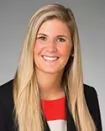On October 6, 2017, the New York State Department of Labor (NYSDOL) utilized its "emergency regulation" power and issued an amendment to the Department of Labor Regulations to clarify that they should not be construed to require that the minimum wage be paid for meal periods and sleep times that are excluded from hours worked under the Federal Labor Standards Act (FLSA) for a home care worker who works a shift of 24 hours or more. This emergency amendment is being issued on the heels of two separate and long-awaited decisions out of the New York State Appellate Division, Second Department: Moreno v. Future Care Health Servs., Inc. and Andryeyeva v. New York Health Care, Inc., that ruled home care workers who work 24-hour shifts are entitled to be paid for all 24 hours of their shift, regardless of whether they were afforded opportunities for sleep and meals.
The Department of Labor Regulations ("Regulations") generally provide that the minimum wage must be paid for each hour an employee is "required to be available for work at a place prescribed by the employer," except that a "residential employee—one who lives on the premises of the employer" need not be paid "during his or her normal sleeping hours solely because he is required to be on call" or "at any other time when he or she is free to leave the place of employment." In 2010, the NYSDOL provided further guidance regarding this regulation, advising in an opinion letter that "live-in employees," whether or not they are "residential employees," could be paid for 13 hours of their 24-hour shift, as long as they are afforded at least eight hours for sleep and three hours for meals ("Opinion Letter").
The September 13 rulings in Moreno v. Future Care Health Servs., Inc. and Andryeyeva v. New York Health Care, Inc. agree with an April 11, 2017, decision out of the First Department in Tokhtaman v. Human Care, LLC and reject the 2010 Opinion Letter, finding that its interpretation conflicts with the regulations insofar as it fails to distinguish between "residential" and "nonresidential" employees. The Andryeyeva court noted, "[t]he plaintiffs were required to be at the clients' residences and were also required to perform services there if called upon to do so. To interpret that regulation to mean that the plaintiffs were not, during those nighttime hours, 'required to be available for work' simply because it turned out that they were not called upon to perform services is contrary to the plain meaning of 'available.'" Thus, the courts ruled to the extent home care workers can demonstrate they are not residential employees who live on the premises of the employer, they are entitled to be paid the minimum wage for all 24 hours of their shifts.
Notably, the decisions in Andryeyeva, Moreno and Tokhtaman are also at odds with decisions out of the United States District Courts for the Southern and Eastern Districts of New York, Severin v. Project OHR (S.D.N.Y. June 20, 2012) and Bonn-Wittingham v. Project OHR (E.D.N.Y. May 17, 2017), which held the NYSDOL's interpretation of the regulations was entitled to deference. In fact, the court in Bonn-Wittingham explicitly found the New York Court of Appeals is not likely to follow Tokhtaman and that it is not unreasonable to treat home care workers who work "live in" shifts as living part time with their clients.
The NYSDOL's emergency amendment has a 90-day shelf life and requires the NYSDOL to publish on the State Register a statement fully describing the specific reasons for the amendment. We anticipate the explanatory statement will be published on or before October 25, 2017. Once the 90-day period expires, the NYSDOL can re-adopt the emergency regulation and such re-adoption remains in effect for an additional 60 days.
What This Means for Employers
While it appears the NYSDOL has temporarily stopped the healthcare industry from hemorraging cash over the next month and a half, the fix is the equivalent of putting a bandage over a bullet wound and it is unclear at this time what they intend to do to in order to achieve a more permanent solution.
Ultimately, the state court decisions may be appealed to New York's highest court, the Court of Appeals. An affirming decision out of the Court of Appeals could have extraordinarily expensive ramifications, leading to a slew of lawsuits and substantial back pay liability for the employing agencies that have not been compensating their home care workers for all hours of their shifts.
In the event the ultimate resolution of this issue is that live-in workers have to be paid for 24 hours of service, agencies may want to explore alternative ways for providing 24-hour home healthcare services. Agencies should consider working with counsel to reconfigure their employment practices and policies to reduce legal risk and overtime expense.
Wage Parity Act
In addition, the home care workers in Tokhtaman brought breach of contract claims, alleging they are third-party beneficiaries of contracts their employer entered into with government agencies requiring them to pay the workers certain wages as required by the New York Home Care Worker Wage Parity Act (WPA). While the WPA does not have an express private right of action, the First Department denied the employer's motion to dismiss these claims and found the workers had standing to sue as third party-beneficiaries. This holding is significant in that it provides home care workers with another vehicle to pursue a lawsuit against employers who violate the WPA.
For Further Information
If you have any questions about this Alert, please contact any of the attorneys in our Employment, Labor, Benefits and Immigration Practice Group or the attorney in the firm with whom you are regularly in contact.
Disclaimer: This Alert has been prepared and published for informational purposes only and is not offered, nor should be construed, as legal advice. For more information, please see the firm's full disclaimer.

